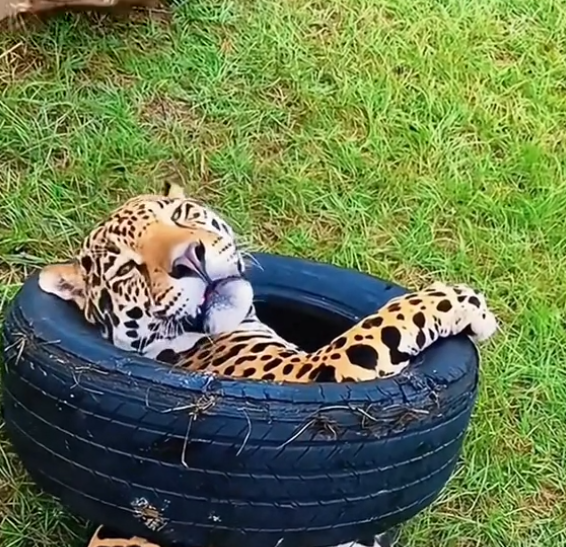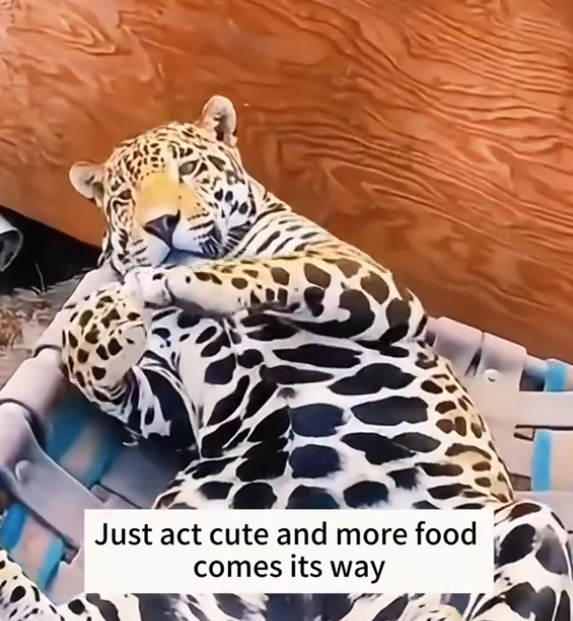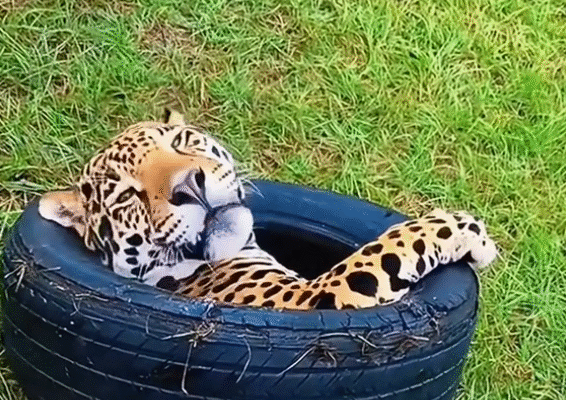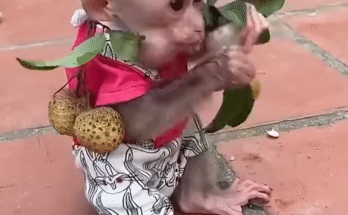
At first glance, you might think the title is just a cheeky play on words. “Jaguar More Like JUGuar”—what does that even mean? But to those who’ve witnessed the story of Max, the rescue jaguar with an unexpected love for… well, jugs, it all makes sense. This isn’t a tale about a jungle predator prowling through the wild, nor is it a sleek advertisement for a luxury car. This is about a big cat with a big personality and an even bigger obsession.
It all began at a wildlife sanctuary in the heart of Costa Rica. Known for rehabilitating injured and orphaned animals, the sanctuary had seen its fair share of sloths, monkeys, and even the occasional tapir. But when the call came in about a young male jaguar found dehydrated and injured on the edge of a logging site, the staff knew they were about to deal with something much more complicated.
Max was brought in with a wounded paw, likely caught in a snare trap. He was weak, scared, and incredibly defensive. At just under a year old, he still had the emotional fragility of a cub, but his size already demanded caution. The team worked around the clock, tending to his injury and helping him adapt to a temporary enclosure that mimicked his natural environment.
For the first two weeks, Max barely made a sound. He ate sparingly and watched the staff through narrowed eyes. It wasn’t until a young volunteer named Tasha accidentally left a large plastic water jug near his enclosure that everything changed.
She had placed the jug down just outside the enclosure while refilling his water bowl. Within moments, Max crept up to the fence, sniffed, and suddenly pounced—not on her, thankfully, but on the jug. His massive paws batted at it through the bars, his tail flicking with curiosity. When Tasha cautiously pushed it inside the enclosure later that evening, Max went wild.
He pounced, rolled, chewed, tossed, and hugged the jug like a long-lost toy. The sanctuary staff had seen animals bond with objects before—blankets, tires, ropes—but never with such intensity. This wasn’t just play; it was passion.
From that day on, Max was a different jaguar. His daily enrichment didn’t just include food puzzles or branches to climb. It included jugs. Big ones. Small ones. Colored ones. Some with bells inside. He’d collect them, stack them, even sleep curled around them. They called it enrichment, but it was starting to look more like an obsession.
It wasn’t long before his quirky behavior caught attention online. Tasha uploaded a short video titled “Jaguar More Like JUGuar”, and it exploded. The clip showed Max dragging a five-gallon jug across his enclosure, tossing it in the air and catching it like a housecat with a toy mouse. Viewers were fascinated. Some laughed. Some cried. Some demanded more footage.

Max became an internet sensation. People began donating jugs to the sanctuary from all over the world. A hardware store in Canada shipped 100 of their unsold containers with a note: “For Max—Canada’s biggest fan of the JUGuar.” A group of schoolchildren from Japan painted floral designs on a batch of recycled jugs and sent them with a letter: “We hope he loves these as much as we love him.”
The sanctuary embraced the fame, but with caution. Max’s wellbeing came first. They set up a live cam so fans could watch him during his playtime and learn more about jaguar conservation. Merch followed: T-shirts, mugs, even water jugs with his paw print printed on them. All proceeds went to fund veterinary care, habitat expansion, and anti-poaching initiatives.
Max’s jug obsession wasn’t just cute—it was educational. It gave the staff a unique way to engage the public about the challenges jaguars face in the wild: habitat loss, illegal hunting, and shrinking territory. And all through the lens of one goofy big cat who couldn’t resist plastic containers.
Still, it wasn’t all fun and games. As Max grew, so did his strength—and his frustration. Jugs started to shatter faster. He became moodier, more restless, especially during mating season. It was a clear sign: Max was ready for a bigger purpose.
The sanctuary began planning for his release.
It wasn’t an easy decision. Rewilding a jaguar who had spent nearly two years in captivity required careful assessment. Would he be able to hunt effectively? Would his jug obsession interfere with his natural instincts? Would he try to play with something dangerous in the wild, thinking it was just another toy?
To answer these questions, they set up a semi-wild training enclosure deep in protected jungle land. It spanned several acres, complete with prey animals, trees, and—at least at first—a single jug placed near the entrance. Max sniffed it once, gave it a half-hearted nudge, and then walked away.
The staff held their breath. Maybe, just maybe, the jungle was already calling.
Over the next six months, Max proved his readiness. He hunted, patrolled, and avoided human contact. He slept under trees, not beside his jugs. It was bittersweet for the team. The jaguar who once cuddled colored plastic now growled at anything that moved. His instincts had returned with full force.
The day of his release, the team left one final gift near the gate. Not a jug—but a stone sculpture of one, painted with all the colors sent by his fans around the world. It was their way of saying goodbye.
Max didn’t stop to look at it. He walked past without hesitation, slipping into the undergrowth, a shadow once again. But the world didn’t forget him.
The “Jug Life” stream remained live for weeks, now showing highlights of his journey. Fans still sent letters. Children wrote stories. Conservation organizations reported a spike in interest and donations, all traced back to “the juguar.”
So yes, Jaguar More Like JUGuar started as a joke. A pun. A silly nickname for a silly habit. But it became something so much more.
It became a movement.
It became a reminder that even the most majestic animals have quirks.
And most importantly, it showed us that empathy, creativity, and a little bit of humor can lead to real, tangible change.
Not bad for a cat and his jug.



